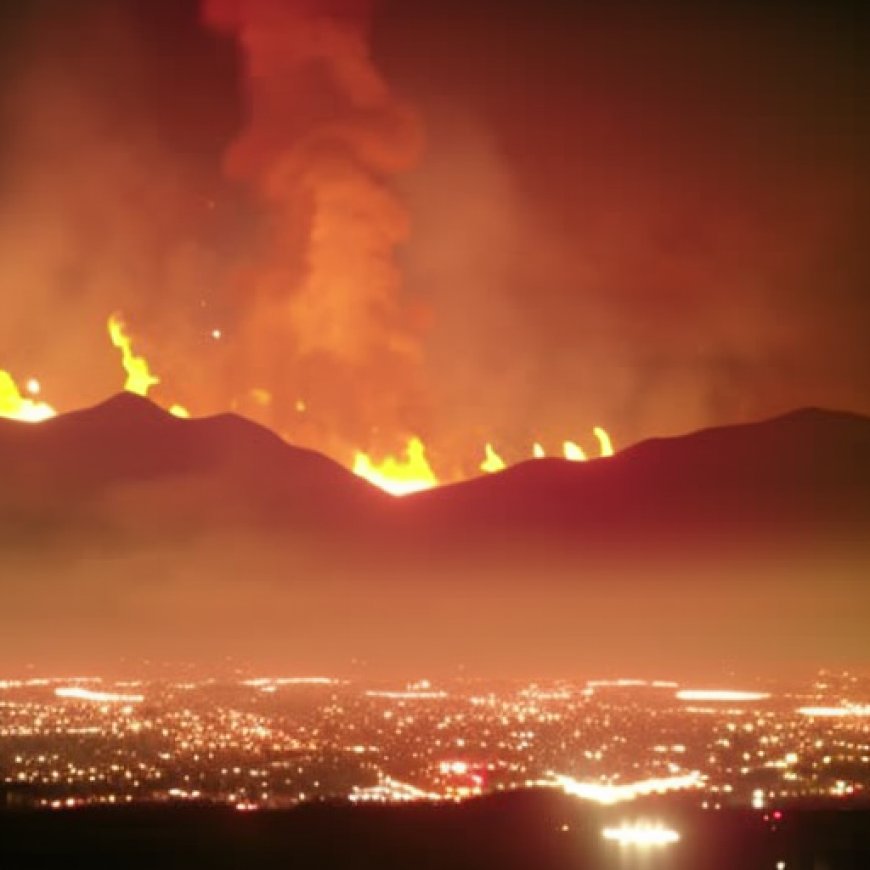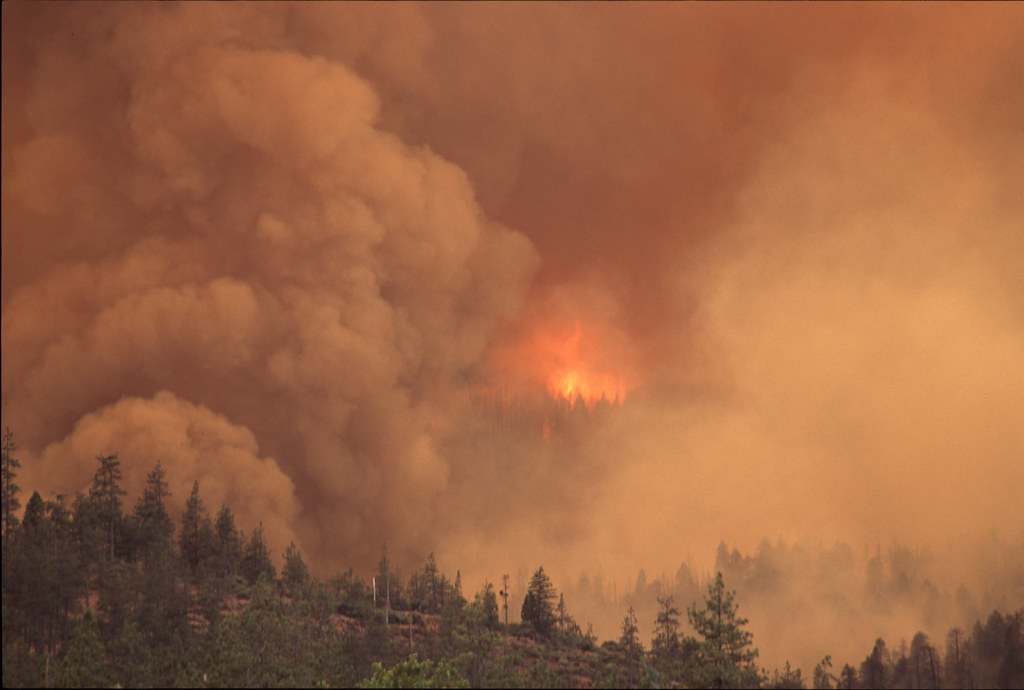Multiple U.S. Regions Issued Air Quality Alerts Due To Canadian Wildfires
Multiple U.S. Regions Issued Air Quality Alerts Due To Canadian ... The Organization for World Peace


Wildfires in Canada Cause Severe Air Pollution in the American Northeast

In the last week of June, wildfires in Canada resulted in a dense orange haze covering New York and other cities in the American Northeast. The smoke also spread to the Midwest, with alerts issued as far south as Alabama. On June 25th, Chicago, Illinois experienced the worst air quality in the world. Detroit and Minneapolis were also among the top four cities with the worst air quality. Additionally, many other cities, including Indianapolis and Madison, had unhealthy air quality according to the U.S. Environmental Protection Agency (E.P.A.). The unpredictable spread of the smoke due to wind makes it challenging to control and address the problem. Unfortunately, the wildfires in Canada are still ongoing.
Impact on Air Quality and Health
The air quality alerts, based on the E.P.A.’s scale, can be difficult to comprehend. Terms like “hazardous” or “unhealthy” do not adequately illustrate the extent of air pollution. A doctor from Chicago’s Northwestern Medicine hospital group compared the current air quality to smoking half a pack of cigarettes a day, highlighting the potential long-term risks to lung and heart health. Studies from the World Health Organization confirm that air pollution causes 7 million deaths annually.
Sustainable Development Goals (SDGs)
- SDG 3: Good Health and Well-being
- SDG 13: Climate Action
The impact of anthropogenic climate change on environmental disasters like these cannot be ignored. It is crucial for President Biden and the Democratic Party to collaborate with nonpartisan environmental organizations to raise awareness among American citizens about the connections between such disasters and human-induced climate change. Tangible actions must be taken, and a portion of the funds allocated in Biden’s infrastructure bill should be dedicated to addressing the hazards of a warming environment.
The Cost of Inaction
Despite claims by some politicians that eliminating fossil fuels and other harmful practices would be too expensive, the cost of inaction far exceeds the cost of taking immediate steps. A report by leading British financial advisement firm Deloitte estimated that unchecked climate change could cost the world $178 trillion over the next 50 years. However, prioritizing climate protection now could result in a financial gain of $43 trillion during the same period.
Media’s Role in Addressing Climate Change
For decades, news organizations have reported on the debate surrounding climate change. However, referring to the existence and causes of climate change as a debate misrepresents the scientific consensus. Over a century of scientific studies and the agreement of numerous scientists, including those from N.A.S.A., confirm that human activities contribute to climate change. Media outlets should not simply report on the impacts of climate change but explicitly connect these disasters to anthropogenic climate change. It is essential to discuss the plans proposed by politicians, economists, and scientists to address climate change and prevent future disasters.
Take Action Now
To learn more about climate change and global warming, click here.
Once anthropogenic climate change is acknowledged, it becomes evident that immediate action is necessary. Media companies and the Democratic Party have a responsibility to raise awareness about the dangers of climate change based on acknowledged research. It is crucial to inspire action and combat the threats posed by environmental pollution.
SDGs, Targets, and Indicators
-
SDG 3: Good Health and Well-being
- Target 3.9: By 2030, substantially reduce the number of deaths and illnesses from hazardous chemicals and air, water, and soil pollution and contamination.
- Indicator: Air quality index and alerts issued by the U.S. Environmental Protection Agency (E.P.A.)
-
SDG 13: Climate Action
- Target 13.1: Strengthen resilience and adaptive capacity to climate-related hazards and natural disasters in all countries.
- Target 13.2: Integrate climate change measures into national policies, strategies, and planning.
- Target 13.3: Improve education, awareness-raising, and human and institutional capacity on climate change mitigation, adaptation, impact reduction, and early warning.
- Target 13.b: Promote mechanisms for raising capacity for effective climate change-related planning and management in least developed countries and small island developing states.
- Indicator: Impact of wildfires on air quality and spread of smoke
-
SDG 17: Partnerships for the Goals
- Target 17.16: Enhance the global partnership for sustainable development, complemented by multi-stakeholder partnerships that mobilize and share knowledge, expertise, technology, and financial resources.
- Indicator: Collaboration between nonpartisan environmental organizations and the Democratic Party to address climate change
Table: SDGs, Targets, and Indicators
| SDGs | Targets | Indicators |
|---|---|---|
| SDG 3: Good Health and Well-being | Target 3.9: By 2030, substantially reduce the number of deaths and illnesses from hazardous chemicals and air, water, and soil pollution and contamination. | Air quality index and alerts issued by the U.S. Environmental Protection Agency (E.P.A.) |
| SDG 13: Climate Action | Target 13.1: Strengthen resilience and adaptive capacity to climate-related hazards and natural disasters in all countries. | Impact of wildfires on air quality and spread of smoke |
| SDG 13: Climate Action | Target 13.2: Integrate climate change measures into national policies, strategies, and planning. | Impact of wildfires on air quality and spread of smoke |
| SDG 13: Climate Action | Target 13.3: Improve education, awareness-raising, and human and institutional capacity on climate change mitigation, adaptation, impact reduction, and early warning. | Impact of wildfires on air quality and spread of smoke |
| SDG 13: Climate Action | Target 13.b: Promote mechanisms for raising capacity for effective climate change-related planning and management in least developed countries and small island developing states. | Impact of wildfires on air quality and spread of smoke |
| SDG 17: Partnerships for the Goals | Target 17.16: Enhance the global partnership for sustainable development, complemented by multi-stakeholder partnerships that mobilize and share knowledge, expertise, technology, and financial resources. | Collaboration between nonpartisan environmental organizations and the Democratic Party to address climate change |
Behold! This splendid article springs forth from the wellspring of knowledge, shaped by a wondrous proprietary AI technology that delved into a vast ocean of data, illuminating the path towards the Sustainable Development Goals. Remember that all rights are reserved by SDG Investors LLC, empowering us to champion progress together.
Source: theowp.org

Join us, as fellow seekers of change, on a transformative journey at https://sdgtalks.ai/welcome, where you can become a member and actively contribute to shaping a brighter future.







